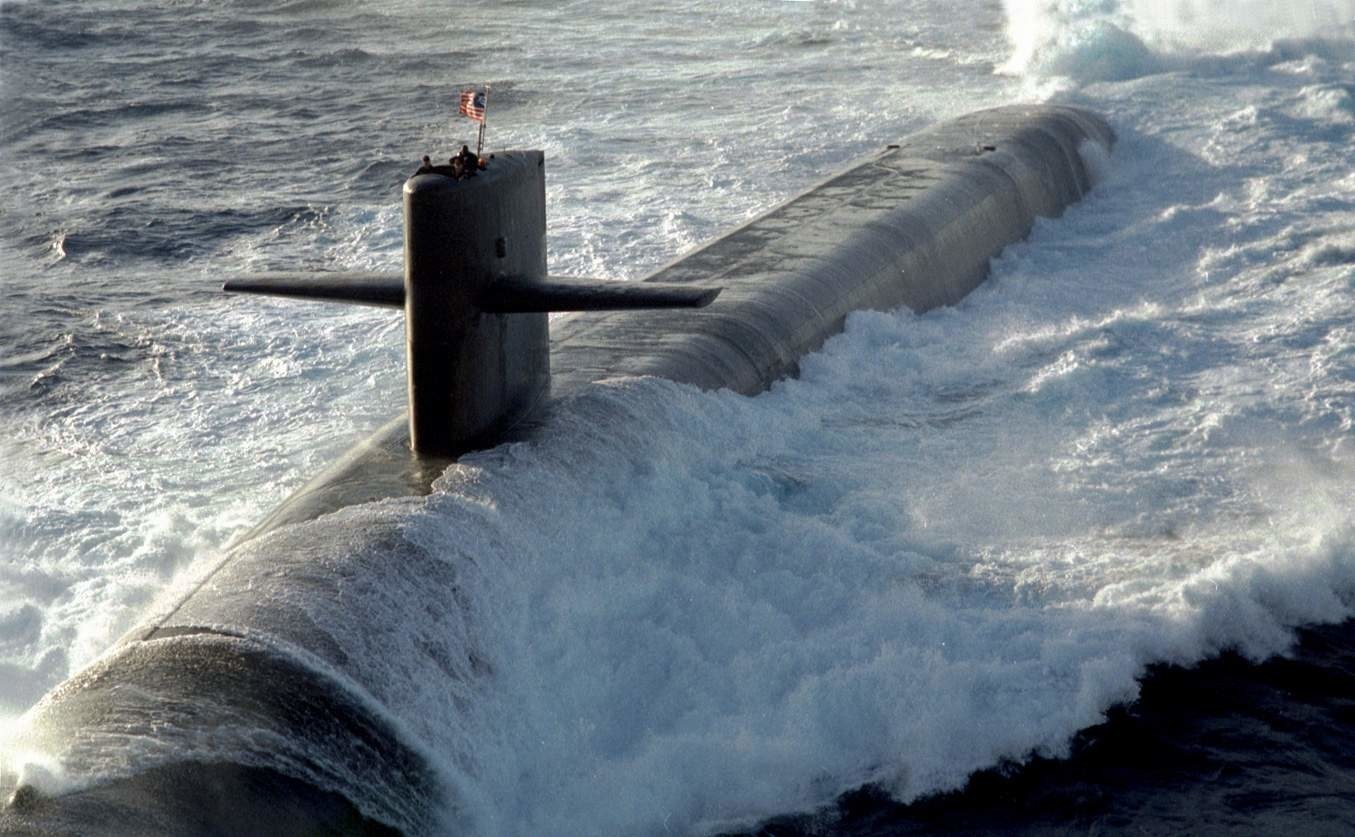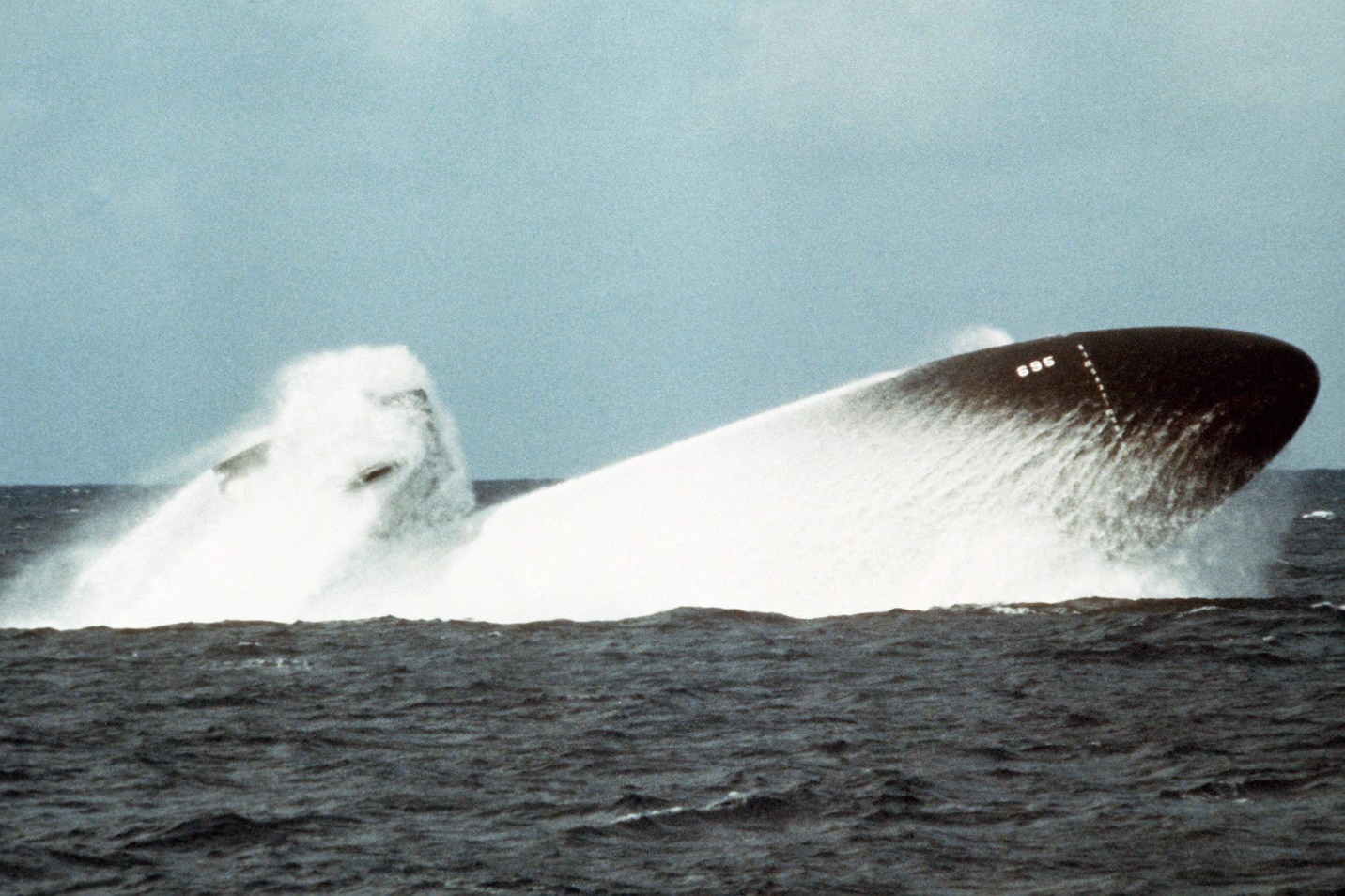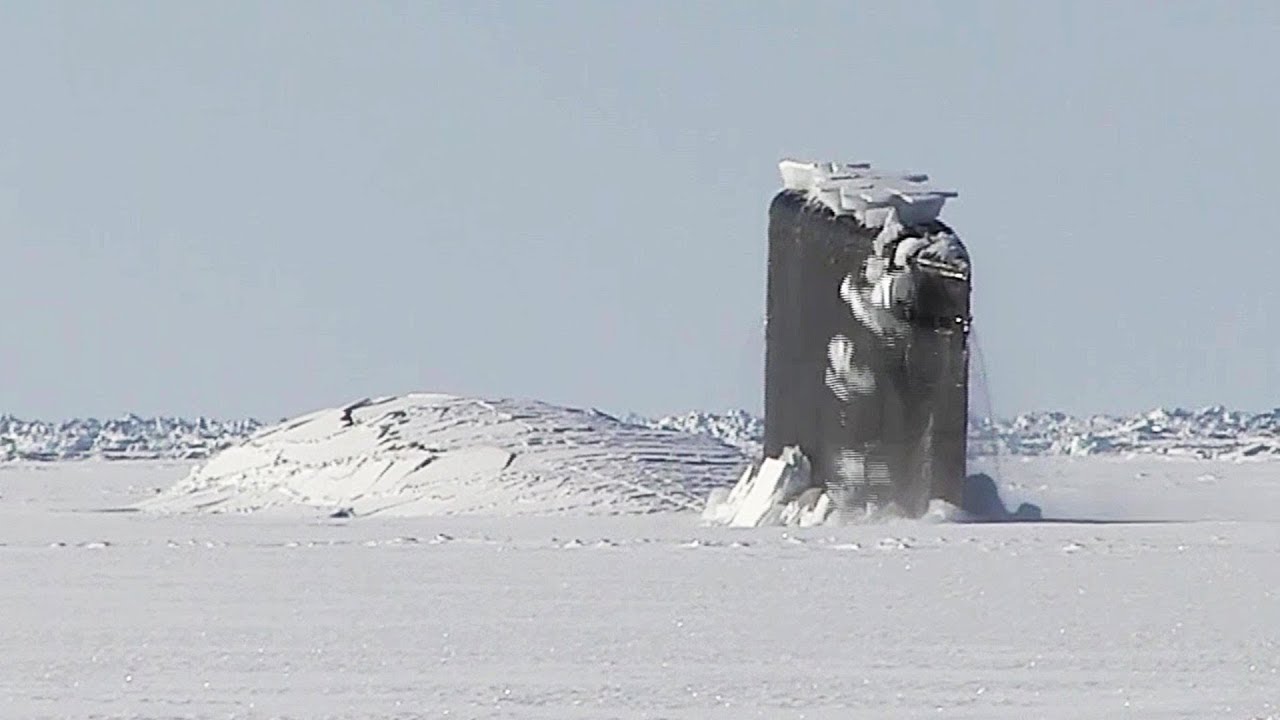USN Submarines

US submarines deploy globally on a myriad of tasks, running silent and deep. Whatever they are asked to do they are very capable weapon and sensor platforms which would be a significant asset should it come to war. A submarine’s greatest strength is its stealth, in peacetime or in war, the ability to be somewhere and do something without being detected is paramount, US submarines are some of the stealthiest in the world in 1994. When at peace, a submarine is constantly monitoring its surroundings, gathering electronic and acoustic intelligence, posing a hidden threat and training for any eventuality. At war in addition to everything else, the submarine is the silent hunter, the knife in the dark that can cut out key targets and escape.
With the exception of the unarmed research vessel USS Dolphin, the entire fleet of US submarines is nuclear powered, the last diesel-electric boat (SSK), USS Blueback SS-581, was retired in 1990. The navy operates two main types; the Attack Submarine designated an SSN, and those designed to carry ballistic missiles with nuclear warheads, designated SSBN and often called ‘Boomers’. Nuclear powered submarines have many advantages, extended periods at sea constantly submerged, high sustained speed, size and unlimited electric power for sensors and other equipment, but they are inherently noisier than a conventionally powered boat running on batteries alone. Nuclear boats are also very expensive to build and operate, few nations can afford them. Tactically, an SSN is at a disadvantage only in restricted and shallow water where an SSK (diesel-electric powered Hunter-Killer) can operate quieter and maneuver better due to its small size. Everywhere else, an SSNs speed can be used to outmaneuver surface foes that are hunting it, and its more prolific sensors and weapons can be used to great effect.
The US Navy maintains a fleet of 24 SSBNs, 97 SSNs and 12 Special Mission SSNs, these are SSNs with a specialized role. Second only in size to the USSR, which maintains roughly twice as many submarines, what the US lacks in numbers however they gain in technology, only the very latest generation of Soviet submarine can challenge the bulk of the US fleet in capability.

On a rough scale of capacity to survive confrontation, the oldest boats in the US inventory, the Permit class should compare favorably to Soviet 1st and some 2nd Generation boats, although the Victor III would put the Permit boats at a severe disadvantage. The Sturgeon class should be a match for the Victor IIIs but will not survive long against 3rd or 4th generation such as the Sierra or Akula classes. The 688 class Los Angeles boats are far more capable than any 2nd generation or older, and a match for the Sierra class 3rd generation boats. The Soviet Alpha class and 4th Generation Akula will prove difficult for the early Los Angeles class boats however, but the 688I and certainly the Seawolf will be able to deal with them.
The job of an SSBN is to remain undetected and ready, as part of the national deterrence force to launch its missiles. If an SSBN is detected it has failed in its main task, the best option is to disengage and escape to hide some more. The Ohio class SSBNs are world class, operate independent of any other element and remain at sea for a significant period of their lifespan.
